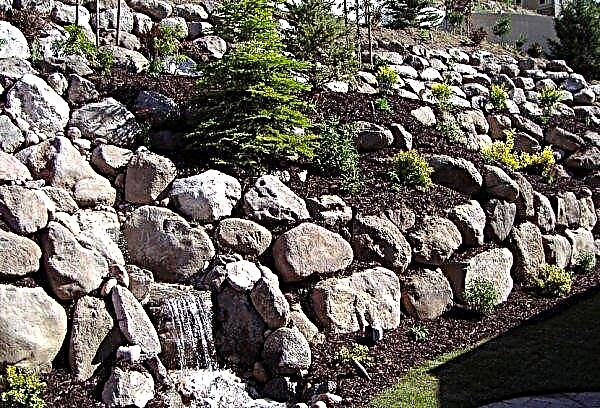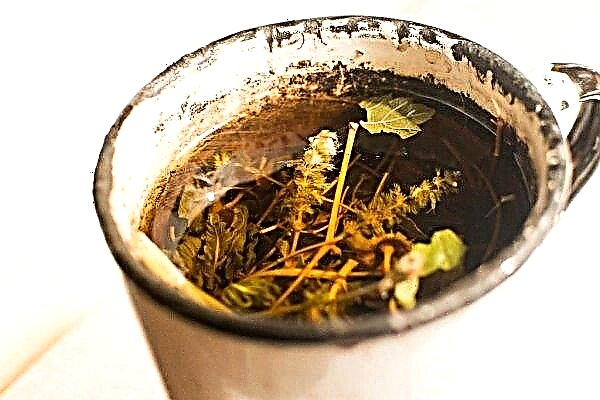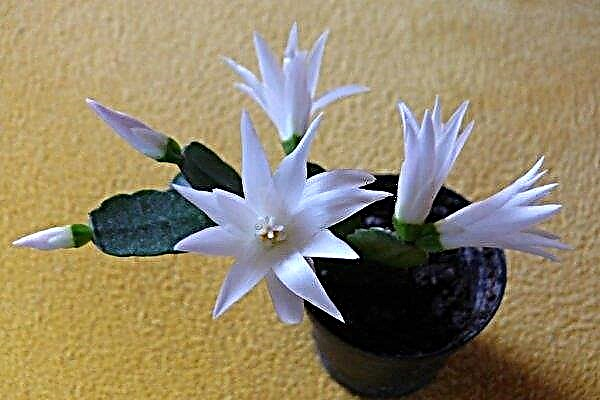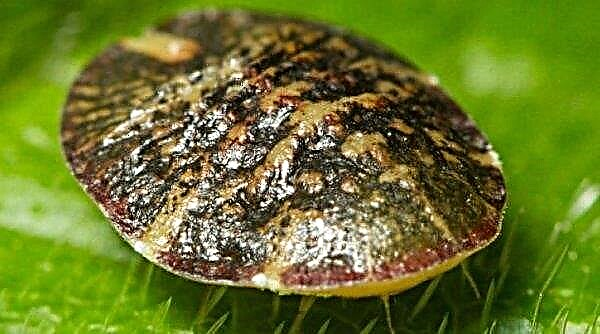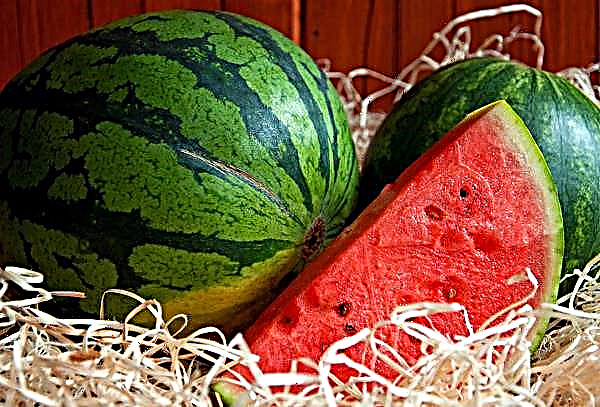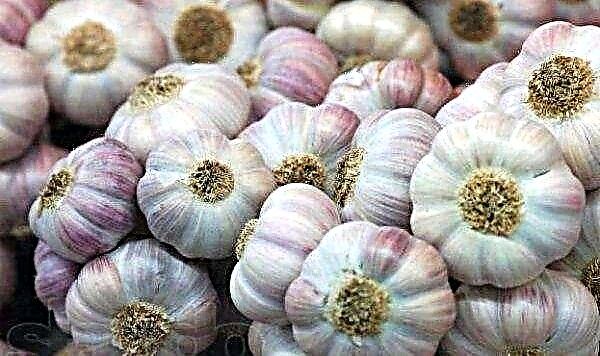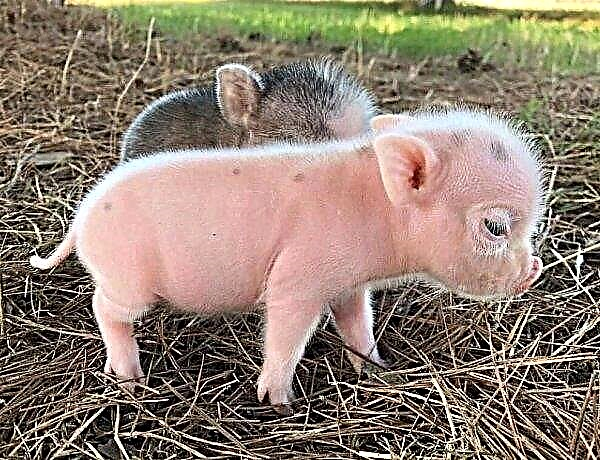Parsley is one of the most common types of greens used in cooking, so it can be found everywhere in beds. However, the procedure for growing a crop is associated with a number of difficulties: parsley may either not rise at all, or give very rare seedlings. We will find out what this can be connected with and what to do to avoid such problems.
Parsley seed germination time
When starting to grow this fragrant green, you should know that the germination of the seeds sown lasts quite a long time. This is due to the large number of different essential oils that are contained in the seeds of the culture and delay the flow of moisture, and hence the development of the plant.
Did you know? Latin name parsley "Petroselinum" translates as "growing on a stone."
The first seedlings, when sowing dry seeds, can be expected only at the end of the 2nd and even the 3rd week. In addition, it should be borne in mind that the germination rate of planting material of the 1st class is 70%, and that of the 2nd class is only 40%. Thus, 1 out of 3 parsley seeds does not sprout.
Why parsley does not emerge: the main reasons
There are several main reasons that determine the lack of seedlings. But if you adhere to the rules for selecting seeds and further planting, then you can minimize such cases or avoid them altogether.
Seed treatment
To increase the number of seedlings before sowing, it is recommended to process the planting material:
- Soaking in milk - the seeds are placed in milk for 20-30 minutes. This procedure increases the rate of germination, and also develops the resistance of the culture to aggressive environmental influences.
- Soaking in warm water - planting material is dipped for 2-3 minutes in hot water, and then soaked in water at room temperature for 9-10 minutes. This serves as a kind of alarm clock that allows you to "wake up" the seeds and accelerate the growth and development of sprouts.
- Soaking in alcohol - the procedure lasts no more than 10 minutes, after which the seeds are washed well under running water and dried.
Important! Many purchased seeds are pre-industrial pre-sowing treatment. AT in this case, processing seeds additionally, on the contrary, is not recommended.
Quality of planting material
One of the most common problems of lack of seedlings is the poor quality of planting material. That is why, when purchasing seeds, it is recommended to pay attention only to trusted producers who have extensive experience in the sales market and are positively noted by other buyers. In addition, you should pay attention to the shelf life of seeds - for parsley it is no more than 2-3 years. Accordingly, the fresher the planting material, the higher its germination.
In addition, you should pay attention to the shelf life of seeds - for parsley it is no more than 2-3 years. Accordingly, the fresher the planting material, the higher its germination.
Landing depth
Depending on the type of soil in the beds, the depth of planting will vary slightly:
- seeds are sown in light soils to a depth of 2–2.5 cm;
- in heavy soils, the sowing depth decreases to 1–1.5 cm.
This greens requires mandatory observance of the norms of the depth of sowing, because if improperly embedded in the ground or in the absence of watering, parsley may not germinate.
To obtain guaranteed seedlings, the seeds of this culture are recommended to germinate first. To do this, they are soaked in a small amount of hot water, and then placed for germination in sawdust or in a damp paper towel. When forming small white roots on seeds (this will take about 1 week), parsley is ready for planting. The distance between the rows when planting should not exceed 18–20 cm.
The distance between the rows when planting should not exceed 18–20 cm.
Did you know? 100 g of parsley contains 4 times more vitamin C than 100 g of lemon.
Incorrect seedling care
There are many reasons why parsley may not sprout.
Among the main ones, these are distinguished:
- low-quality planting material - purchased from unscrupulous sellers or with a violated shelf life;
- wrong soil - unsuitable heavy soil is better replaced with sandy loam or loamy;
- Incorrect sowing depth and density - dense sowing leads to improper formation of plants and, as a result, to curvature and thinning of root crops;
- wrong cultivation technique - insufficient watering, lack of loosening and weeding;
- wrong sowing spot - insufficient amount of natural light.
How to sow parsley so that it sprouts quickly
Parsley, like dill, belongs to cold-resistant crops, ready to withstand frosts, so the best period for planting it is the second half of April, at air temperatures of +5 ... + 10 ° С. To accelerate the process of growth and development of seedlings, it is recommended to use covering material. In this case, a polyethylene film is suitable, which after the appearance of the first shoots can be replaced with a non-woven material such as lutrasil.
To accelerate the process of growth and development of seedlings, it is recommended to use covering material. In this case, a polyethylene film is suitable, which after the appearance of the first shoots can be replaced with a non-woven material such as lutrasil.
Important! Many gardeners, when planting, often rely on the lunar calendar, however, the facts of the influence of the moon on crops are not scientifically confirmed and, as a rule, are refuted.
Rich Harvest Tips
After the appearance of the first sprouts of parsley, it is necessary to adhere to some basic rules that will help both get a rich harvest and refresh the already formed greens:
- Thinning - The first time it is necessary to carry out in the phase of 1-2 leaves on the sprout, at a distance of 5 cm. After 2-3 weeks, it is repeated, at a distance of about 10 cm.
- Loosening - it is recommended to do it after each watering or rain to a depth of 6–7 cm. This process increases the flow of oxygen to the rhizome and is able to revive wilted plants.
- Watering - Frequent and at the same time not plentiful irrigation by irrigation.
- Top dressing - when the sprouts reach a height of 10–12 cm. An aqueous solution of superphosphate and potassium chloride is introduced with watering (25 g of substance per 10 l of water).
 The process of growing parsley has its own nuances, however, with the right approach to planting it, you can easily get a juicy and rich crop that can decorate, enrich any dish in your kitchen with taste and vitamins.
The process of growing parsley has its own nuances, however, with the right approach to planting it, you can easily get a juicy and rich crop that can decorate, enrich any dish in your kitchen with taste and vitamins.


